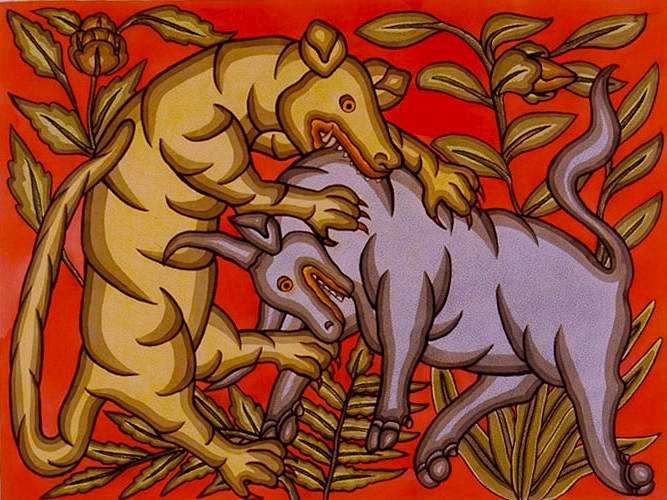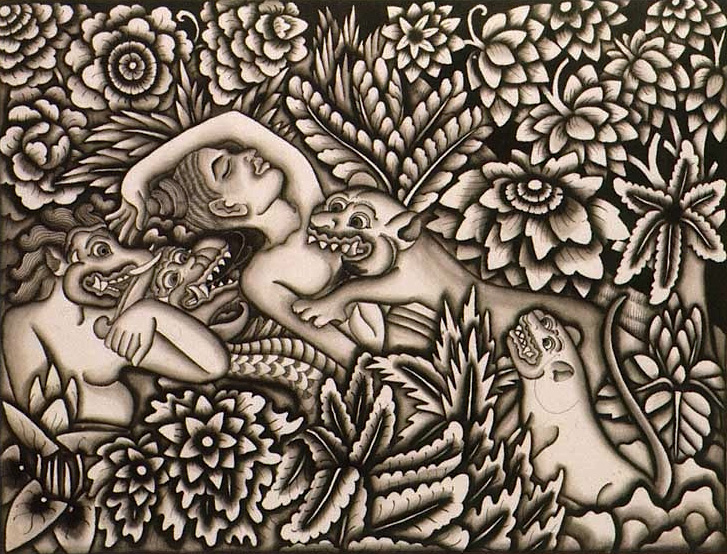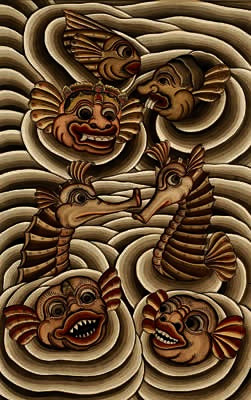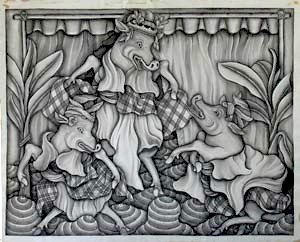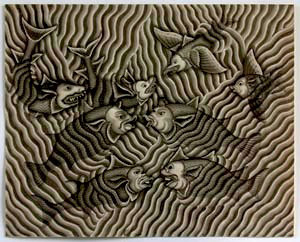Sanur School of Painting
I Ketut Rudin, c 1950s
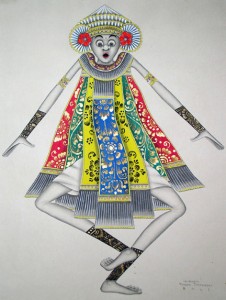
Sanur is a beach resort located a few miles south of Denpasar which was the port of entry in 1930s for cruise ships from Batavia (Jakarta). These western tourist stayed in Denpasar and made day trips to Sanur and Ubud.
The development of modern Balinese painting in Sanur was stimulated by the Neuhaus brothers (Hans and Rolf), who in 1935 opened a aquarium for tropical fishes from the surrounding coral reefs. As their business grew, the needs for souvenirs prompted him to open a souvenir shop selling local works of art: textiles, jewelry, sculptures and paintings. They befriended a local priest and a painter, Ida Bagus Nyoman Rai Griya, and encouraged him to produce drawings for their shop. Their success in selling these drawings, attracted locals to learn and produce paintings for the Neuhaus brothers. As tourists preferred colored drawings, they hired few local artists to color black and white ink drawings (Spanjaard, 2007).
Early Sanur paintings featured mostly erotic scenes and sea- and land animal kingdoms. The works are covered by highly stylized large and coarse design lack of perspective, and adored with pastel colors. Large sea creatures showed in perfect harmony with humans adorned with large gigantic sea foliage and lines suggesting ocean waves. The lack of details may be attributed to fast production to keep up with the demand or to produce income quickly, while the pastel colors and erotic darwings were a reflection of the tourist preference at the time.
Welknown artists from Sanur are I Rundu, Ida Bagus Nyoman Rai, I Soekarja, I Poegoeg, I Rudin, Ida Bagus Soenia and many others.
I Gusti Made Rundu (1919 – 1993). Rundu contributed significantly to the development of Sanur school of painting. His depiction of animal kingdom shows a refined understanding of the animal interactions in nature. His design is simple, the placement of animals in his design shows the influence of Escher. Spanjaard (2007) wrote that the ducth artist Rudolf Bonnet showed him a postcard of an Escher drawing.
I Soekarja (1912 – 1988). Unlike typical Sanur artist, Soekarja depicted drawings with the subject matter taken from the Balinese religious iconography and folklore, such as the story of Rajapala and the sacrifice of Sutasoma.
Ida Bagus Ketut Soenia (1906 – 1990). Soenia was first among the Sanur artists to draw human figures interacting with each other in an surreal and erotic way. Perhaps the depiction of the bizarre erotic human interactions made his paintings were well sought and commanded high prices at the Neuhaus shop. He retired from painting in 1960s and became a priest and changed his name to Pedanda Gede Oka Timbul.
Sanur school of painting unfortunately does not survive past the second world war.
Selected Works
